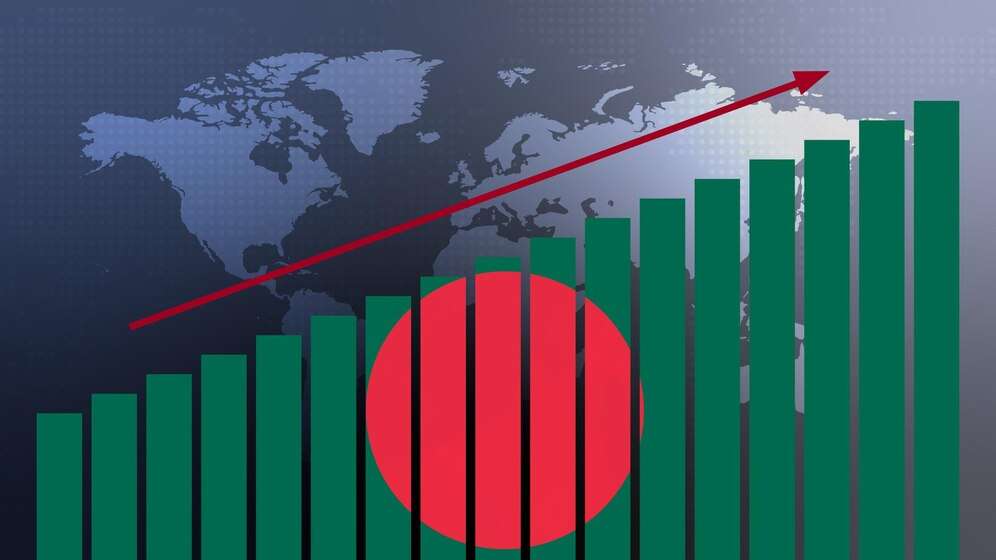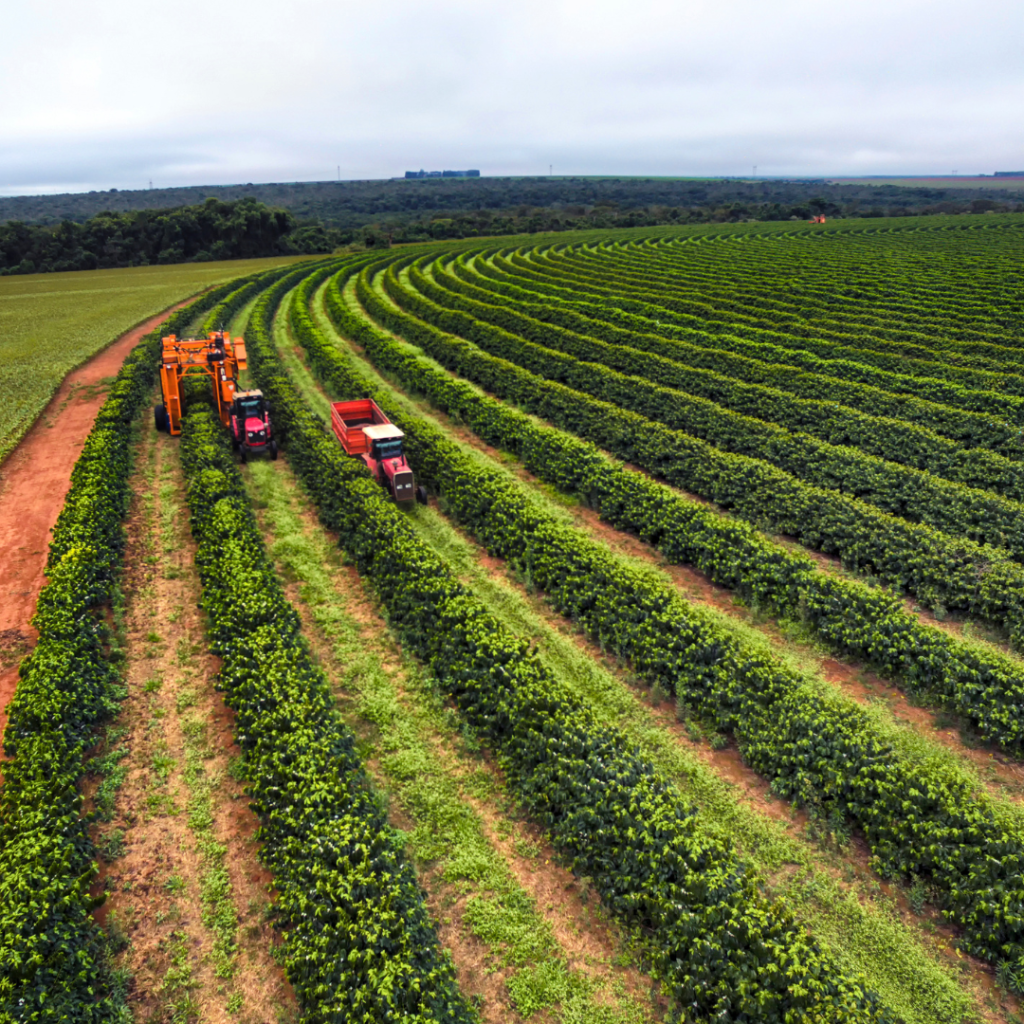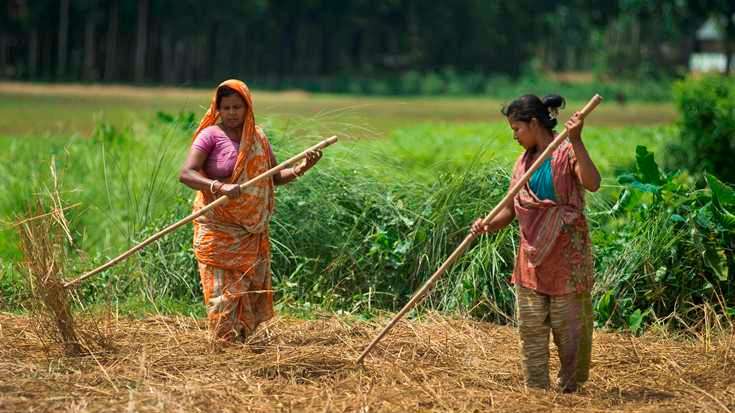About the Author:
Dr. AKM Hai is a renowned material scientist and policy analyst based in Toronto, Canada. With a distinguished career holding prestigious positions as a policy advisor, he is also the author of various international publications. Currently, Dr. Hai leads the Speedy Economic Forum and heads Molesci Matesci, a Canadian company. He spearheads a dedicated team of passionate researchers, industry experts, and innovators committed to pioneering advancements in the fields of green energy, food and beverage, pharmaceuticals, specialty chemicals, and biomass.
Dr. Hai’s economic vision centers around a Sustainable People’s Economy, encapsulated by the principle:
“I make the honey,
you take the money,
together we create honey,
and shape the people’s economy.”
Abstract
Bangladesh, a densely populated and rapidly developing nation in South Asia, faces the critical challenge of balancing economic growth with environmental sustainability. As the country aspires to reach middle-income status, it grapples with climate vulnerability, resource constraints, and environmental degradation. This comprehensive article delves into how Bangladesh can transition to a green economy, supported by reliable data and references. It outlines sector-specific strategies and provides detailed policy recommendations for the current government to initiate transformative actions toward sustainable development.
1. Introduction
Bangladesh has achieved remarkable economic progress over the past few decades, with a consistent GDP growth rate and significant improvements in social indicators like poverty reduction and healthcare. However, this growth has often come at the expense of the environment, leading to increased pollution, deforestation, and resource depletion. The concept of a green economy offers a viable pathway to reconcile economic development with environmental stewardship.

The United Nations Environment Programme (UNEP) defines a green economy as one that results in “improved human well-being and social equity, while significantly reducing environmental risks and ecological scarcities” 1. For Bangladesh, embracing a green economy is not only an environmental necessity but also an economic opportunity to foster innovation, create jobs, and enhance resilience against climate change.

2. The Imperative for a Green Economy in Bangladesh
2.1 Climate Vulnerability
- Geographical Risks: Bangladesh’s low-lying topography makes it highly susceptible to sea-level rise, cyclones, floods, and storm surges. According to the Global Climate Risk Index 2021, Bangladesh ranks seventh among countries most affected by extreme weather events from 2000 to 2019 2.
- Economic Impact: Climate-related disasters cause significant economic losses. The World Bank estimates that by 2050, climate change could cost Bangladesh up to 2% of its GDP annually 3.
2.2 Economic Growth and Environmental Degradation
- GDP Growth: Bangladesh has maintained an average GDP growth rate of around 6-7% over the past decade, reaching 8.15% in FY 2018-19 4.
- Environmental Costs: Industrialization and urbanization have led to air and water pollution, deforestation, and loss of biodiversity. The World Bank reports that environmental degradation costs Bangladesh about 3.4% of its GDP annually 5.

2.3 Resource Constraints
- Energy Dependency: Bangladesh relies heavily on natural gas for energy, which is depleting rapidly. The country’s proven gas reserves are expected to run out by 2031 if new reserves are not discovered 6.
- Agricultural Pressure: As a predominantly agrarian society, overuse of land and water resources has led to soil degradation and decreased agricultural productivity.
3. Key Sectors for Green Transformation
3.1 Renewable Energy Development
3.1.1 Current Energy Mix
- Energy Consumption: As of 2020, Bangladesh’s total installed electricity generation capacity was approximately 20,000 MW, with around 3% coming from renewable sources 7.
- Energy Access: Despite improvements, about 8% of the population still lacks access to electricity 8.

3.1.2 Potential for Renewable Energy
- Solar Energy:
- Solar Irradiation: Bangladesh receives an average solar radiation of 4-6.5 kWh/m²/day, indicating high potential for solar energy 9.
- Existing Initiatives: The Solar Home System (SHS) program, facilitated by Infrastructure Development Company Limited (IDCOL), has installed over 5 million systems, benefiting around 20 million people 10.
- Wind Energy:
- Wind Speeds: Coastal regions exhibit wind speeds of 5-6 m/s at 30 meters height, suitable for wind power generation 11.
- Biomass and Biogas:
- Agricultural Waste: With significant agricultural output, there is ample biomass available for energy conversion.
3.1.3 Recommendations
- Policy Support:
- Feed-in Tariffs: Implement feed-in tariffs to guarantee prices for renewable energy producers.
- Renewable Energy Targets: Set ambitious targets, such as achieving 10% renewable energy share by 2025.
- Investment Incentives:
- Tax Exemptions: Provide tax holidays and import duty exemptions on renewable energy equipment.
- Public-Private Partnerships (PPPs): Encourage PPPs to attract private investment in renewable energy projects.
- Infrastructure Development:
- Grid Expansion: Upgrade and expand the national grid to accommodate decentralized renewable energy inputs.
- Energy Storage Solutions: Invest in battery storage technologies to address intermittency issues.
- Capacity Building:
- Training Programs: Establish institutes for renewable energy education and training.
- Research and Development: Fund R&D for localized renewable energy technologies.
3.2 Sustainable Agriculture
3.2.1 Challenges in the Agricultural Sector
- Chemical Dependency: Excessive use of chemical fertilizers and pesticides has degraded soil health.
- Inefficient Irrigation: Over-reliance on groundwater for irrigation leads to depletion and increased salinity.
- Climate Impact: Erratic weather patterns affect crop yields, threatening food security.
3.2.2 Recommendations
- Promote Organic Farming:
- Subsidies and Grants: Offer financial incentives to farmers adopting organic practices.
- Certification Programs: Establish standards and certification for organic products to access premium markets.
- Modern Irrigation Techniques:
- Technology Adoption: Introduce drip and sprinkler irrigation systems to optimize water use.
- Training and Awareness: Educate farmers on water-saving practices.
- Agroforestry and Crop Diversification:
- Intercropping Systems: Encourage planting of trees and diverse crops to enhance soil fertility and biodiversity.
- Resilient Crop Varieties: Develop and distribute climate-resilient seeds.
- Access to Finance:
- Microcredit Schemes: Provide low-interest loans for farmers investing in sustainable practices.
3.3 Energy Efficiency and Conservation
3.3.1 Industrial Sector
- Energy Consumption: The industrial sector accounts for approximately 47% of the country’s total energy consumption 12.
3.3.2 Recommendations
- Energy Audits:
- Mandatory Audits: Require large industries to conduct regular energy audits.
- Audit Subsidies: Provide financial support for small and medium enterprises (SMEs) to carry out audits.
- Incentivize Efficiency:
- Equipment Upgrades: Offer tax credits for investing in energy-efficient machinery.
- Efficiency Standards: Implement minimum energy performance standards for industrial equipment.
- Awareness Campaigns:
- Workshops and Seminars: Organize events to disseminate best practices in energy management.
3.4 Waste Management and Circular Economy
3.4.1 Current Waste Scenario
- Urban Waste Generation: Dhaka alone generates over 5,000 tons of solid waste per day 13.
- Recycling Rates: Less than 10% of waste is recycled, leading to environmental pollution.
3.4.2 Recommendations
- Infrastructure Development:
- Recycling Facilities: Invest in modern recycling plants for plastics, paper, glass, and electronic waste.
- Waste Segregation Systems: Implement source segregation of waste at the household and commercial levels.
- Policy Measures:
- Extended Producer Responsibility (EPR): Hold manufacturers accountable for the end-of-life management of their products.
- Ban on Single-Use Plastics: Enforce restrictions on plastic bags and other single-use items.
- Community Engagement:
- Public Awareness Campaigns: Educate citizens on waste reduction, reuse, and recycling.
- Incentive Programs: Introduce schemes like pay-as-you-throw to encourage waste minimization.
3.5 Sustainable Transportation
3.5.1 Transportation Challenges
- Urban Congestion: Major cities face severe traffic congestion, leading to increased emissions.
- Air Pollution: Vehicle emissions contribute significantly to urban air pollution, with PM2.5 levels exceeding WHO guidelines 14.
3.5.2 Recommendations
- Public Transportation Enhancement:
- Mass Transit Systems: Expand metro rail projects, bus rapid transit (BRT), and improve existing bus services.
- Intermodal Connectivity: Integrate different modes of transport for seamless travel.
- Electric Mobility:
- Policy Support: Develop a national electric vehicle (EV) policy with incentives for manufacturers and consumers.
- Charging Infrastructure: Establish widespread charging stations in urban and highway locations.
- Non-Motorized Transport (NMT):
- Infrastructure Development: Build dedicated lanes for bicycles and pedestrians.
- Bike-Sharing Programs: Introduce public bike-sharing systems in cities.
- Emission Standards:
- Vehicle Regulations: Enforce stricter emission standards for all vehicles.
- Inspection and Maintenance: Implement regular vehicle fitness checks.
4. Cross-Cutting Strategies
4.1 Policy and Governance
- National Green Economy Strategy:
- Comprehensive Planning: Develop a roadmap with clear objectives, timelines, and responsible agencies.
- Institutional Framework:
- Coordination Bodies: Establish inter-ministerial committees to ensure cohesive implementation.
4.2 Fiscal and Financial Measures
- Green Taxation:
- Carbon Tax: Introduce a carbon tax to internalize environmental costs.
- Pollution Charges: Levy charges on industries based on pollution levels.
- Subsidy Reforms:
- Fossil Fuel Subsidies: Gradually phase out subsidies on fossil fuels.
- Renewable Subsidies: Redirect funds to support renewable energy and sustainable practices.
- Green Financing:
- Green Bonds: Issue government-backed green bonds to fund environmental projects.
- Climate Funds: Access international climate funds like the Green Climate Fund (GCF).
4.3 Education and Capacity Building
- Curriculum Development:
- Environmental Education: Integrate sustainability concepts into all levels of education.
- Skill Development:
- Vocational Training: Establish programs for green jobs in sectors like renewable energy and waste management.
- Research Institutions:
- Innovation Hubs: Support universities and research centers focusing on green technologies.
4.4 Technology and Innovation
- Technology Transfer:
- International Collaboration: Engage with developed countries for technology sharing.
- Local Innovation:
- Incubation Centers: Promote startups working on sustainable solutions.
4.5 Social Inclusion
- Community Participation:
- Engage Stakeholders: Involve local communities in planning and implementation.
- Gender Considerations:
- Empower Women: Ensure women’s participation in green economy initiatives.
5. Challenges and Mitigation Strategies
5.1 Financial Constraints
- Challenge: Limited domestic resources to fund large-scale green projects.
- Mitigation:
- International Aid: Seek grants and concessional loans from international organizations.
- Private Sector Investment: Create a conducive environment for private investment through PPPs.
5.2 Technological Barriers
- Challenge: Lack of access to advanced technologies.
- Mitigation:
- Capacity Building: Invest in education and training to build local expertise.
- Incentivize R&D: Provide tax benefits for companies investing in research.
5.3 Institutional Weaknesses
- Challenge: Bureaucratic inefficiencies and lack of coordination.
- Mitigation:
- Governance Reforms: Streamline processes and improve inter-agency collaboration.
- Transparency Measures: Implement e-governance tools to reduce corruption.
5.4 Social Resistance
- Challenge: Resistance to change from traditional practices.
- Mitigation:
- Awareness Campaigns: Educate the public on the benefits of a green economy.
- Demonstration Projects: Showcase success stories to inspire adoption.
6. Case Studies and Success Stories
6.1 Solar Home Systems (SHS) Program
- Overview: Managed by IDCOL, the SHS program is one of the world’s largest off-grid renewable energy programs.
- Impact:
- Energy Access: Over 5 million systems installed, providing electricity to approximately 12% of the population 10.
- Employment: Created over 70,000 jobs in manufacturing, installation, and maintenance.
- Success Factors:
- Microfinance Model: Affordable financing options for rural households.
- Government Support: Policy backing and incentives facilitated growth.
6.2 Waste Recycling Initiatives
- Waste Concern
- Overview: A social enterprise focusing on waste recycling and composting.
- Impact:
- Waste Reduction: Processes over 130 tons of waste daily.
- Carbon Credits: Earned carbon credits under the Clean Development Mechanism (CDM).
- Success Factors:
- Public-Private Partnerships: Collaboration with municipalities and private entities.
- Community Engagement: Involvement of local communities in waste collection and segregation.
7. Expected Benefits of Transitioning to a Green Economy
7.1 Economic Benefits
- Job Creation: The International Labour Organization (ILO) estimates that transitioning to a green economy could create 1.5 million new jobs in Bangladesh by 2030 15.
- Innovation and Competitiveness: Green technologies can open new markets and enhance global competitiveness.
7.2 Environmental Benefits
- Reduced Emissions: Lower greenhouse gas emissions contribute to global climate mitigation efforts.
- Resource Conservation: Sustainable practices ensure the longevity of natural resources.
7.3 Social Benefits
- Health Improvements: Reduced pollution leads to better health outcomes.
- Poverty Reduction: Green jobs and sustainable livelihoods help alleviate poverty.
8. Policy Recommendations for the Government
8.1 Short-Term Actions (1-2 Years)
- Policy Formulation:
- Green Economy Strategy: Develop and publish a national strategy document.
- Incentive Schemes:
- Tax Benefits: Introduce immediate tax incentives for renewable energy and energy-efficient technologies.
- Awareness Campaigns:
- Public Outreach: Launch nationwide campaigns to educate citizens and businesses.
8.2 Medium-Term Actions (3-5 Years)
- Infrastructure Development:
- Renewable Projects: Commission large-scale renewable energy projects.
- Regulatory Reforms:
- Emission Standards: Enforce stricter environmental regulations.
- Capacity Building:
- Educational Programs: Integrate sustainability into national education curricula.
8.3 Long-Term Actions (5+ Years)
- Sustainable Urban Planning:
- Green Cities: Develop smart city initiatives with sustainability at the core.
- International Leadership:
- Climate Diplomacy: Position Bangladesh as a leader in global climate negotiations.
9. Conclusion
Bangladesh’s journey towards a green economy is both a necessity and an opportunity. By strategically investing in renewable energy, sustainable agriculture, energy efficiency, waste management, and sustainable transportation, the country can achieve sustainable development goals while enhancing resilience against climate change.
The government’s role is pivotal in orchestrating this transition through policy support, financial incentives, capacity building, and stakeholder engagement. Collaborative efforts involving the private sector, civil society, and international partners will be essential to overcome challenges and realize the full potential of a green economy.
References
Annex: Additional Data and Statistics
A. Energy Sector
- Electricity Access: Increased from 47% in 2009 to 92% in 2019 [^A1^].
- Per Capita Energy Consumption: Approximately 344 kWh/year, one of the lowest globally [^A2^].
B. Agricultural Sector
- Contribution to GDP: Agriculture accounts for 13.6% of GDP [^A3^].
- Employment: Employs about 40% of the labor force [^A4^].
C. Environmental Indicators
- Deforestation Rate: Loss of 2.6% forest cover between 2000 and 2018 [^A5^].
- Biodiversity Loss: Decline in wildlife populations due to habitat destruction.
Note to the Government
The path to a green economy is multifaceted and requires a holistic approach. The government is urged to take immediate and sustained action across all sectors to ensure a sustainable future for Bangladesh. By adopting the detailed strategies and recommendations provided, Bangladesh can not only mitigate environmental risks but also harness new economic opportunities that contribute to the well-being of its people.
Prepared by:
An expert in Bangladesh’s economy and green economic development, committed to supporting sustainable growth and environmental stewardship.
Appendix: Useful Resources for Further Reading
- Bangladesh Planning Commission: Seventh Five Year Plan FY2016 – FY2020.
- UNDP Bangladesh: Sustainable Development Goals (SDGs) in Bangladesh.
- Asian Development Bank (ADB): Country Partnership Strategy: Bangladesh, 2016–2020.
For inquiries or further discussion on implementing these strategies, stakeholders and policymakers are encouraged to engage with experts and international organizations specializing in green economy transitions.
Footnotes
- United Nations Environment Programme (UNEP). (2011). Towards a Green Economy: Pathways to Sustainable Development and Poverty Eradication. Retrieved from UNEP Website
- Germanwatch. (2021). Global Climate Risk Index 2021. Retrieved from Germanwatch Website
- World Bank. (2013). Climate Change Could Cut Bangladesh’s Rice Production by 2050. Retrieved from World Bank Website
- Bangladesh Bureau of Statistics (BBS). (2020). GDP Growth Rate. Retrieved from BBS Website
- World Bank. (2018). Enhancing Opportunities for Clean and Resilient Growth in Urban Bangladesh. Retrieved from World Bank Website
- Petrobangla. (2017). Annual Report. Retrieved from Petrobangla Website
- Sustainable & Renewable Energy Development Authority (SREDA). (2020). Renewable Energy Status. Retrieved from SREDA Website
- International Energy Agency (IEA). (2019). Bangladesh Energy Profile. Retrieved from IEA Website
- Renewable Energy Policy Network for the 21st Century (REN21). (2018). Global Status Report. Retrieved from REN21 Website
- Infrastructure Development Company Limited (IDCOL). (2021). Solar Home Systems Program. Retrieved from IDCOL Website
- SREDA & NREL. (2018). Wind Resource Mapping in Bangladesh. Retrieved from SREDA Website
- Bangladesh Power Development Board (BPDB). (2019). Annual Report. Retrieved from BPDB Website
- Dhaka North City Corporation (DNCC). (2020). Waste Management Overview. Retrieved from DNCC Website
- Department of Environment (DoE). (2019). Air Quality Index Reports. Retrieved from DoE Website
- International Labour Organization (ILO). (2018). World Employment Social Outlook 2018: Greening with Jobs. Retrieved from ILO Website
